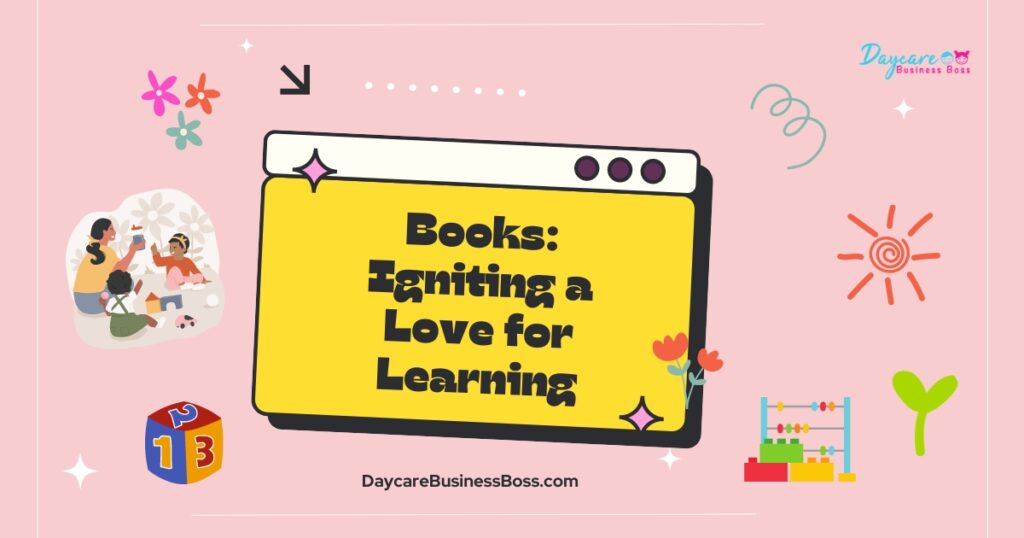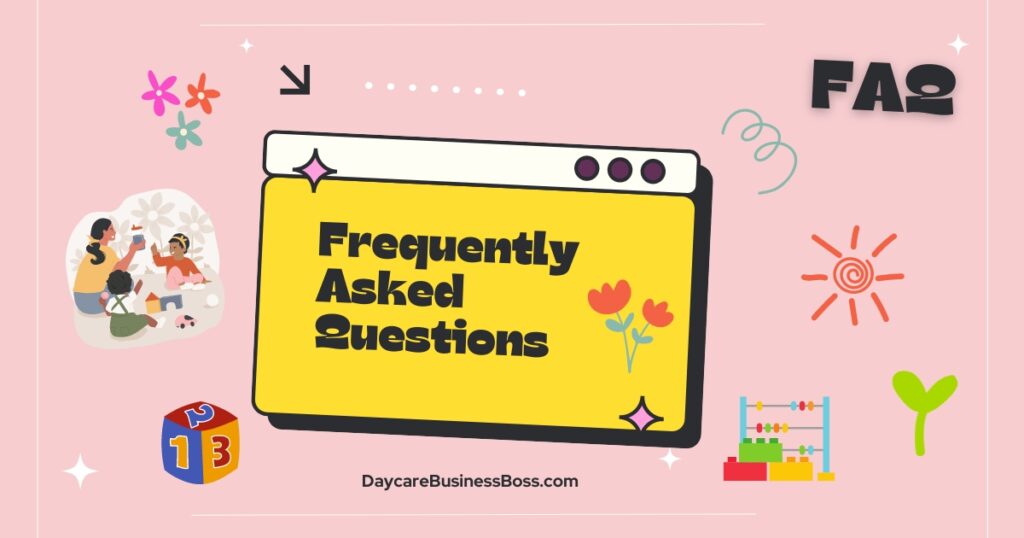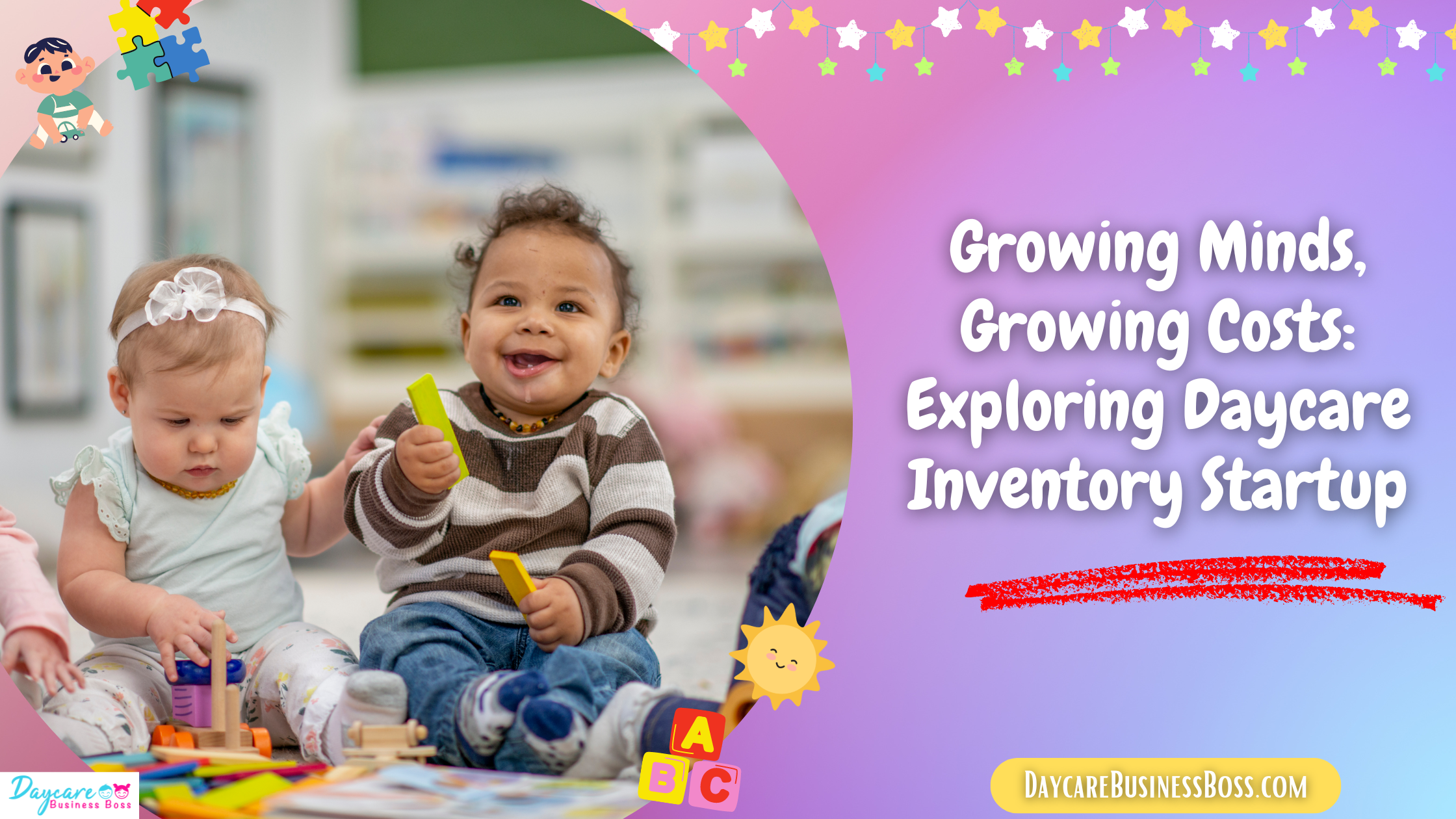Starting a daycare is a praiseworthy venture that carries the promise of nourishing young minds and creating a nurturing environment. Aspiring daycare owners frequently focus on the creative and educational components of their business, such as curriculum development, facility design, and assembling a staff of passionate caregivers. However, in the excitement of establishing a setting that fosters growth, it’s easy to miss a critical component that serves as the foundation of an effective daycare: inventory setup expenses.
To ensure a solid start, you should begin by addressing inventory needs such as toys, books, furniture, and learning materials. These costs vary from $5,000 to $20,000, contingent on daycare size and quality.
In this article, we will examine the significance of inventory beginning costs for daycares, looking at the various things that make up this critical investment and how their costs can vary depending on aspects such as daycare size and quality. By diving into this financial component, prospective daycare operators will have a thorough awareness of the resources needed to establish a firm foundation for young learners.
The Crucial Role of Inventory in Daycare Setup
A great daycare goes well beyond simply providing a safe place for children to spend their days. The complexities of a well-managed daycare stretch into many areas, and one of the foundations of this sophisticated web is a well-preserved inventory. These seemingly insignificant items have the potential to change the childcare environment into a dynamic and engaging learning environment, promoting the growth and development of young minds in its care. From toys to books, furniture to instructional tools, each piece contributes to an excellent childcare experience.
Toys, which are sometimes considered as simply sources of entertainment, have a more important duty in a daycare setting. Toys that are diverse and age-appropriate not only entertain but also act as important learning and development tools. Puzzles boost cognitive skills while building blocks promote spatial reasoning and problem-solving. Playing with art tools encourages self-expression, while educational games encourage critical thinking. A wide range of toys cater to many areas of a child’s development, enabling a balanced growth trajectory.
Books are windows into the world, and a well-stocked library introduces youngsters to the delights of reading, imagination, and information acquisition. Storytime not only improves linguistic abilities but also fosters curiosity and empathy. A well-curated bookshelf promotes inclusivity and broadens children’s horizons by showcasing diversity in characters and themes. Children embark on intellectual excursions that establish the groundwork for lifetime learning as they immerse themselves in the written word.
The furniture in daycare is more than just functional; it defines the physical and social landscape. Children learn to manage their space and belongings by using child-sized tables and chairs. Comfortable reading nooks offer a relaxing haven for quiet exploration. Collaborative areas with cushions and carpets promote teamwork and socialization by facilitating group activities. A well-chosen piece of furniture improves the entire environment, making the daycare a place where children feel safe, empowered, and ready to participate.
Learning resources range from informative posters to hands-on kits that encourage sensory inquiry. These tools turn the daycare into an interactive learning environment where children may experiment with mathematical concepts, scientific facts, and artistic approaches. Children engage in sensory play by interacting with textures, colors, and forms, honing their fine motor skills and cognitive capacities. The correct learning materials enable youngsters to question, experiment, and learn about their surroundings.
Inventory curation is not an accidental chore; it is a conscious effort to establish a nurturing and exciting atmosphere. Each item is a piece of the puzzle that contributes to the overall development of youngsters. They gain cognitive, emotional, social, and physical skills as they engage with the inventory, which serves as the foundation for their personalities.
Read more about: Navigating the Costs of Starting a Daycare: Essential Budgeting Tips
Toys: Fueling Creativity and Play
Toys are the vivid heart of every childcare setting, pulsing with the energy of children’s laughter, curiosity, and limitless imagination. These seemingly basic toys are significantly more than ordinary items; they serve as conduits for young minds to explore, learn, and develop important life skills. Toys emerge as vital instruments that support cognitive, emotional, and social growth, allowing children to embark on journeys of self-discovery and creative inquiry in the enchanted domain of daycare.
Toys become a child’s companions, mentors, and infinite sources of excitement the moment he or she enters a daycare facility. The fascination with building blocks entices youngsters to build towering buildings and elaborate designs, subtly teaching spatial awareness, problem-solving abilities, and fine motor skills. Puzzles, with their interlocking parts and hidden answers, encourage critical thinking and strategic planning as children struggle with patterns and shapes, sharpening their analytical skills.
Toys, on the other hand, have far-reaching implications that go far beyond cognitive development. Toys weave threads of connection and collaboration into the rich tapestry of social interactions. Children learn to empathize, negotiate, and collaborate via imaginative role-playing scenarios using dolls and action figures. They practice many roles and circumstances through these narratives, refining their social skills, emotional intelligence, and comprehension of the world around them.
Toys’ allure is not based just on their unique characteristics, but on the varied range they provide collectively. A well-curated collection includes toys that cater to various learning styles and developmental stages, resulting in an environment that encourages exploration and discovery. Sensory toys engage the senses, encouraging an appreciation for textures, colors, and shapes. Board games and interactive puzzles promote cooperative play while teaching youngsters the principles of patience, taking turns, and gracious competitiveness. Open-ended toys, such as art supplies and building tools, allow youngsters to translate their imaginations into concrete creations.
Incorporating a variety of toys into the daycare setting goes beyond just entertainment; it is an essential component of the pedagogical strategy. Children internalize complicated concepts and abilities in an organic, joyful way through the play. Play-based learning not only encourages their natural curiosity but also allows kids to create connections, investigate, and solve problems on their own. Children develop brain networks while manipulating toys, increasing their cognitive faculties while being ignorant of the educational adventure they are starting on.
Daycare providers are like curators of wonder when it comes to creating a setting where learning through play thrives. The artistic selection of toys considers children’s developmental milestones, pushing them to push themselves and attain new heights. Caregivers introduce novelty and excitement into the learning process by presenting an ever-changing rotation of toys, eliminating stagnation and ensuring that every day is an opportunity for discovery and growth.
Books: Igniting a Love for Learning

Books serve as doors to faraway galaxies, time-honored tales, and unknown mental landscapes in the enchanted realm of youth. Their pages can inspire imagination, foster linguistic prowess, and instill a lifelong love of reading and learning. A treasure trove of age-appropriate books lies within the carefully curated walls of a daycare’s well-stocked library, ready to transport children on literary journeys that shape their intellect, empathy, and creativity.
A broad variety of books unfurls its arms among the shelves filled with bright spines and enticing covers, engulfing children in a world of limitless possibilities. These literary companions serve as gateways to uncharted territory, opening young minds to cultures, ideas, and perspectives outside of their immediate surroundings. A voyage through the pages of books cultivates an appreciation for diversity, builds empathy, and opens the door to discussions on the enormous tapestry of human experiences.
Storytime, a beloved daycare routine, is a shining example of interactive learning. Not only do children’s language skills improve with each page flip, but their minds are also lured to explore unknown areas of thought. Curiosity is piqued by engaging storylines, while characters and quandaries raise questions that prompt critical thought. Children’s imaginations are let free as stories unfold, painting vivid mental pictures that expand their cognitive landscapes.
The importance of a well-stocked library goes beyond developing linguistic proficiency and cognitive growth; it also welcomes each child’s uniqueness. A wide range of genres caters to a wide range of interests and learning styles. Fiction draws readers into exotic worlds, while nonfiction reveals the wonders of reality, and poetry soothes young hearts with rhythmic rhythms. A daycare library becomes a refuge where each kid finds the joy of literature in their unique way by accommodating preferences.
Early exposure to literature has a long-term impact on a lifelong love of learning. Caregivers create the groundwork for intellectual inquiry and personal growth by instilling a love of reading in children at a young age. Children who find consolation in the written word are more inclined to seek knowledge on their own, experiment with new ideas, and develop strong communication skills that will serve them for the rest of their life.
Furniture: Comfort and Functionality
The silent backbone of a daycare’s physical landscape is furniture, which shapes the outlines of a room where children’s experiences evolve. The selection of furniture is more than just an aesthetic pursuit; it is a deliberate effort to create an atmosphere that caters to the special demands of young minds. Every piece of furniture is a functional instrument that helps to create a caring, engaging, and safe environment for children to explore, learn, and recharge.
Child-sized tables and chairs play important roles in the symphony of a daycare’s activities. Despite their little stature, they can instill in children a sense of autonomy and independence. These properly proportioned furniture encourage children to direct their mealtimes and activities. Children gain a sense of empowerment as they negotiate the world around them on a scale appropriate for their size, mastering self-reliance and responsibility. They develop the foundation of confidence that will accompany them on their learning journey during these times of self-directed involvement.
Naptime, a treasured reprieve during a hectic daycare day, is anchored in well-designed nap rooms. Cots or mats that are carefully organized to provide each child with their area create the ideal setting for rest and refreshment. Children refresh their physical energies while cultivating healthy sleep habits in the gentle embrace of these designated nap places. Quality naptime furniture emphasizes the daycare’s commitment to overall well-being, ensuring that children emerge from their peaceful interlude refreshed and eager to embark on new adventures.
Furniture’s value extends beyond individual items; it weaves the fabric of varied activities that constitute a daycare experience. Activity tables foster teamwork and cooperation by encouraging collaborative play and group tasks. Reading nooks, with their comfy sofas and bookshelves, transform into havens for solitary exploration and the delight of literary discovery. Learning areas featuring interactive items pique children’s interest, encouraging them to start on self-guided educational adventures.
The furniture chosen by a daycare is a reflection of the principles and devotion it extends to the children under its care. High-quality, ergonomic furniture demonstrates a commitment to providing a safe and supportive atmosphere for growth. The careful placement of furniture encourages fluid mobility, reducing congestion and allowing for a smooth flow of activities. Childproofing procedures guarantee that safety is prioritized, allowing youngsters to explore freely.
Read more about: Child-Focused Essentials: The Daycare Inventory Checklist Advantage
Learning Materials: Fostering Skill Development
Learning materials are the colorful threads that weave together the fabric of growth and discovery within the rich tapestry of a daycare’s educational ecology. These resources provide an orchestra of opportunity, each note resonating with the harmonic growth of young learners, ranging from art supplies that call to creative souls to instructional instruments that inspire curious minds. They act as conduits for youngsters to refine vital skills ranging from fine motor dexterity to imaginative self-expression, and from problem-solving proficiency to cognitive flowering.
Art supplies have a unique place in the pantheon of educational materials. A box of crayons, a palette of paints, or a lump of clay is more than just a collection of colors and textures; they are how youngsters express themselves. Their emotions, experiences, and thoughts are manifested onto paper and canvas as small hands clutch paintbrushes and wield crayons. Art encourages self-expression, giving youngsters a voice when words fail. It fosters creativity by allowing people to imagine the intangible and translate it into physical things that reflect their individuality.
Educational tools, on the other hand, serve as compasses for young minds as they navigate the maze of cognitive discovery. Puzzles, with their complicated patterns and interconnected parts, are problem-solving ambassadors. The alphabet sets serve as stepping stones to linguistic skills, connecting sounds and symbols. As children face problems, these tools drive cognitive growth by kindling synapses and brain pathways, developing resilience and analytical thinking.
A diverse range of learning resources is analogous to a painter’s palette, with each color adding to the masterpiece that is a child’s holistic growth. Daycare providers ensure that the learning landscape caters to a symphony of developmental requirements by providing a diverse range of resources. Just like a painter changes brushes and paints to create distinct strokes and shades, children require a variety of materials to thrive in all aspects of their development journey.
A flexible learning environment supports each child’s individuality. It acknowledges that certain young minds thrive in the world of words and letters, whereas others find consolation in the tactile world of textures and forms. Children’s preferences emerge when they interact with a variety of learning resources, and their talents are celebrated. Children become active participants in their education in such a setting, grabbing the reins of their learning journey and leading it toward areas that tickle their interest and curiosity.
Frequently Asked Questions

Why is it critical to consider inventory needs when opening a daycare?
When opening a daycare, it is critical to address inventory needs because these goods constitute the foundation of the learning and play environment. Toys, books, furniture, and learning materials all aid in the development, creativity, and engagement of youngsters. A carefully managed inventory improves care quality and sets the tone for a compassionate and stimulating childcare experience.
How do inventory costs differ depending on the size and quality of the daycare?
Inventory expenses vary greatly depending on the size of your daycare and the quality of the things you select. Larger daycares require a larger collection to accommodate more children, which affects prices. Choosing high-quality toys, furnishings, and materials may result in higher upfront costs, but it is an investment in long-term productivity. Quality and cost must be balanced to provide an enriching atmosphere.
How can I budget for childcare inventory requirements?
Daycare inventory budgeting necessitates meticulous preparation. Look for vendors and compare the costs of toys, books, furniture, and educational items. Make a precise budget outlining how much you’re willing to spend on each category. Keep in mind that replenishing and changes are ongoing. To get the necessary funds for a well-equipped and effective childcare setup, consider several funding sources such as personal savings, loans, grants, or crowdfunding.
To learn more on how to start your own daycare checkout my startup documents here.
The information provided by DaycareBusinessBoss.com (“The Site”) is for general informational purposes only. All information on the Site is provided in good faith, however, we make no representation or warranty of any kind, express or implied, regarding the accuracy, adequacy, validity, reliability, availability or completeness of any information on the Site. Under no circumstance shall we have any liability to you for any loss or damage of any kind incurred as a result of the use of the Site or Reliance on any information provided on the Site. Your use of the Site and your reliance on any information on the Site is solely at your own risk.
This blog post is for educational purposes only and does not constitute legal advice. Please consult a legal expert to address your specific needs. Terms and Conditions. (https://daycarebusinessboss.com/terms-conditions/)

Meet Shawn Chun: Entrepreneur and Childcare Business Fan.
I’m a happy individual who happens to be an entrepreneur. I have owned several types of businesses in my life from a coffee shop to an import and export business to an online review business plus a few more and now I create online daycare business resources for those interested in starting new ventures. It’s demanding work but I love it. I do it for those passionate about their business and their goals. That’s why when I meet a childcare business owner, I see myself. I know how hard the struggle is to retain clients, find good employees and keep the business growing all while trying to stay competitive.
That’s why I created Daycare Business Boss: I want to help childcare business owners like you build a thriving business that brings you endless joy and supports your ideal lifestyle.

